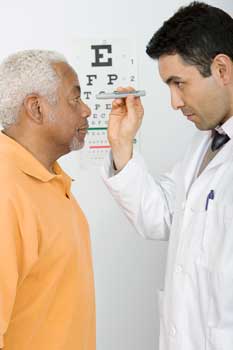Low-income, mostly African-American patients with diabetes seen at a large, public safety-net hospital, have low rates of utilizing eye care, according to a study from the University of Alabama at Birmingham published online Dec. 5 in JAMA Ophthalmology.
 Researchers sought to assess eye care among patients with diabetes seen at a county-owned health care facility, Cooper Green Hospital outpatient eye clinic, in 2007. Diabetic retinopathy is a leading cause of vision disability and the No. 1 cause of new cases of blindness among working-age adults in the United States.
Researchers sought to assess eye care among patients with diabetes seen at a county-owned health care facility, Cooper Green Hospital outpatient eye clinic, in 2007. Diabetic retinopathy is a leading cause of vision disability and the No. 1 cause of new cases of blindness among working-age adults in the United States.
“Because African-Americans are at twice the risk of Caucasians of being diagnosed with diabetes, and income is related to whether a person receives eye care, we investigated whether low-income persons with diabetes received recommended eye care,” said Paul McLennan, Ph.D., assistant professor in the Department of Surgery and lead author of the study. “Our results show that, overall, frequency of eye care was low, just 33 percent within the first year, and only 45 percent within two years.”
The team identified 867 patients with diabetes: 61.9 percent were women, 76.2 percent were black and 61.4 percent were indigent, with an average age of nearly 52 years. Eye-care rates were lower for younger patients between the ages of 19 and 39 than for those 65 years of age or older.
“The differences in eye-care utilization by age group suggest that additional education efforts to increase the perception of need among urban minority populations may be enhanced if focused on younger people with diabetes,” said MacLennan.
MacLennan and colleagues say that low socioeconomic status is a risk factor for visual impairment because of decreased preventive services and poor continuity of care, which can delay diagnoses and increase complications.
The American Diabetes Association, the American Academy of Ophthalmology and the American Optometric Association all recommend that people with Type 1 diabetes have an annual dilated-eye examination after five years of diagnosis and that persons with Type 2 diabetes have a dilated-eye examination at time of diagnosis and annually thereafter.
Cynthia Owsley, Ph.D., and Gerald McGwin, Ph.D., from the Department of Ophthalmology, are co-authors on the study. This research was supported by the Innovative Network for Sight Research, which is funded by the Centers for Disease Control and Prevention.